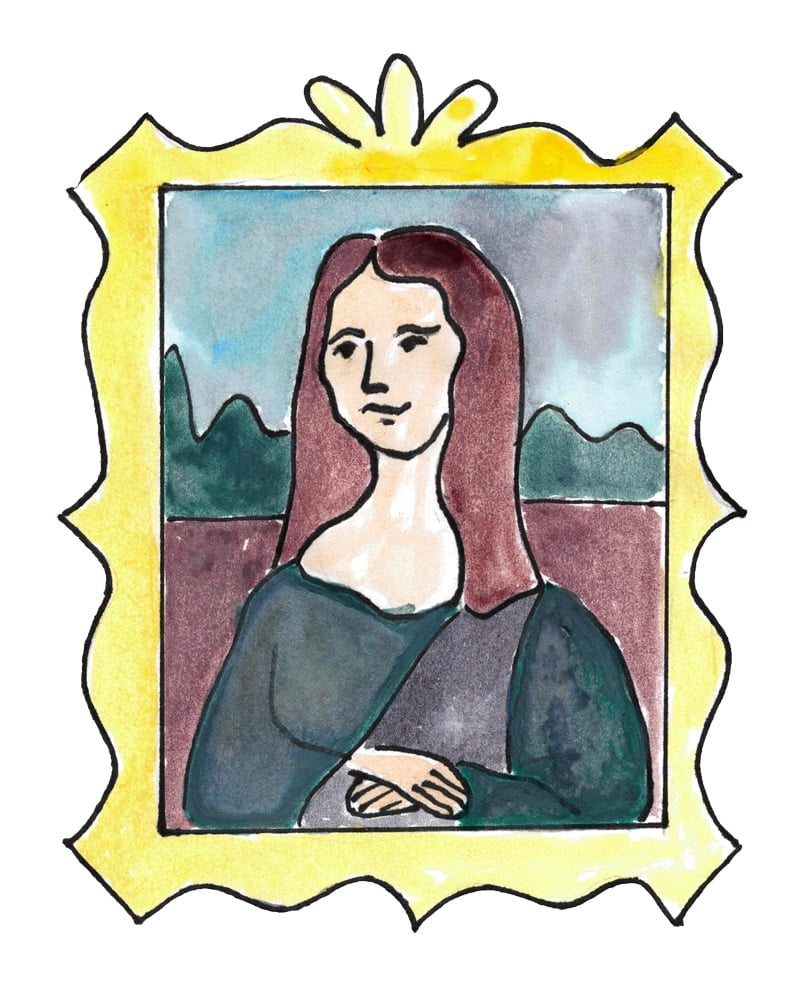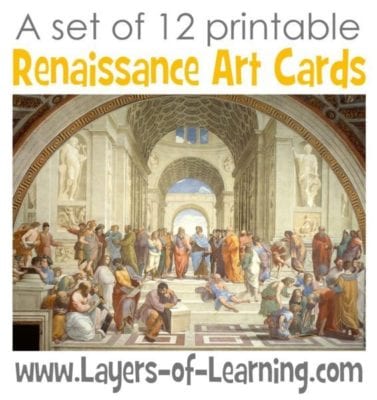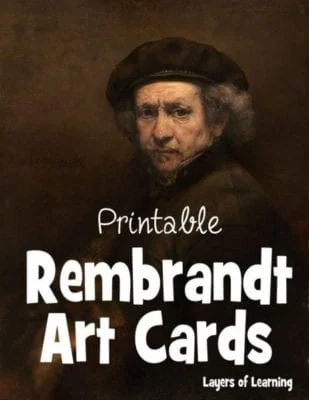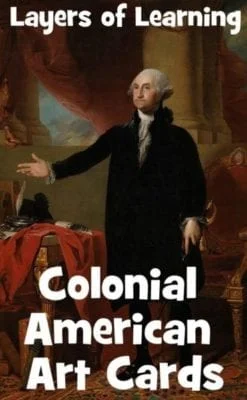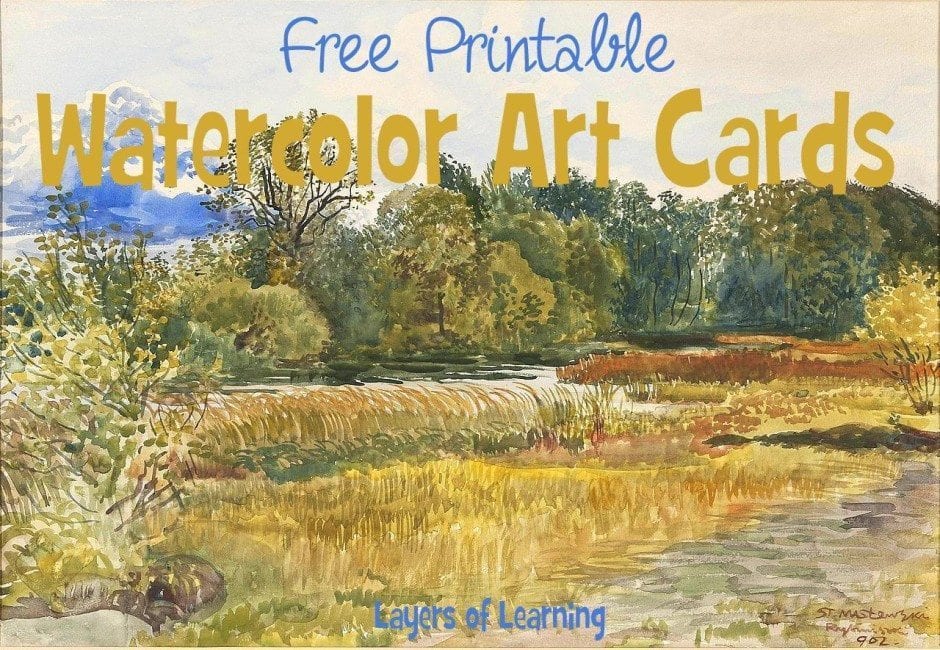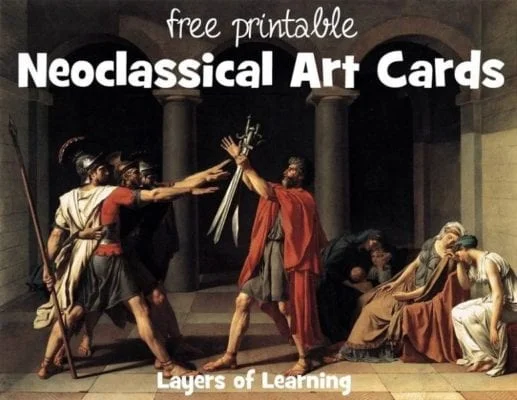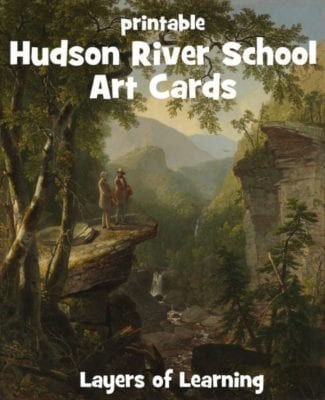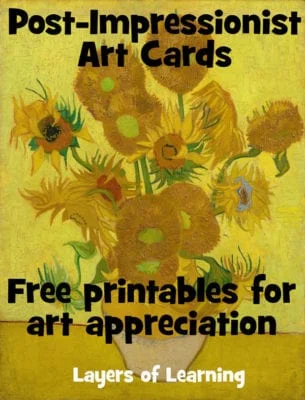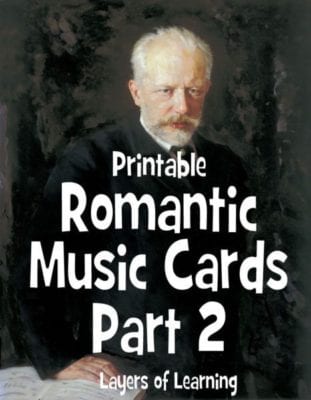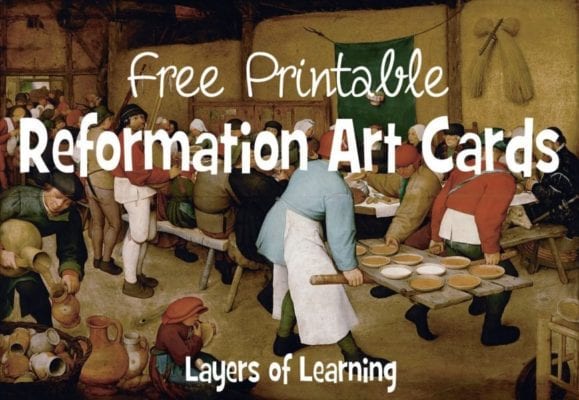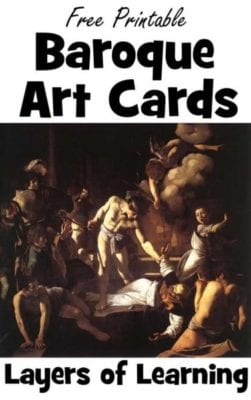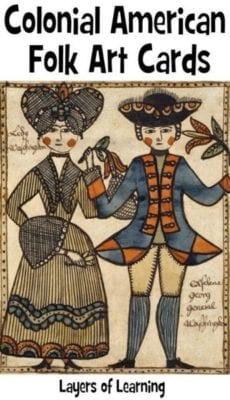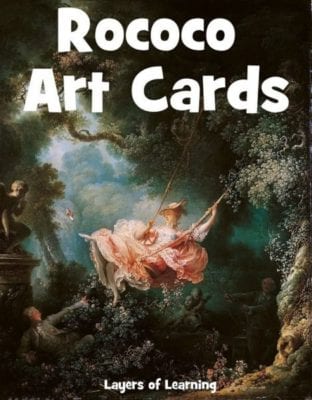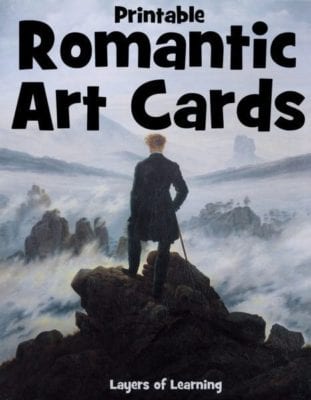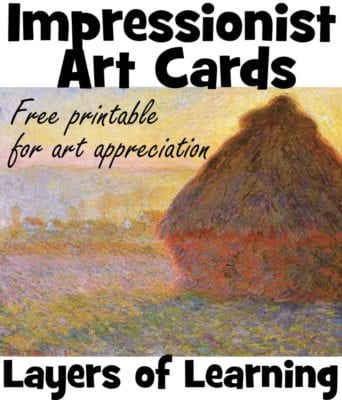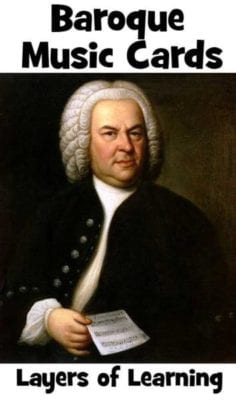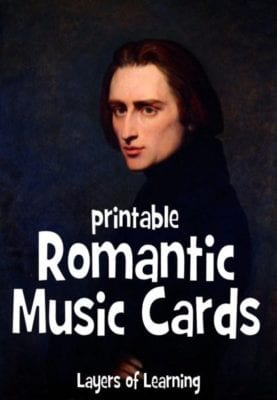This exploration is for all ages, as the colored smilies show. You can use art cards to play games and learn about famous art with your whole family. Art appreciation is an important part of an art education.



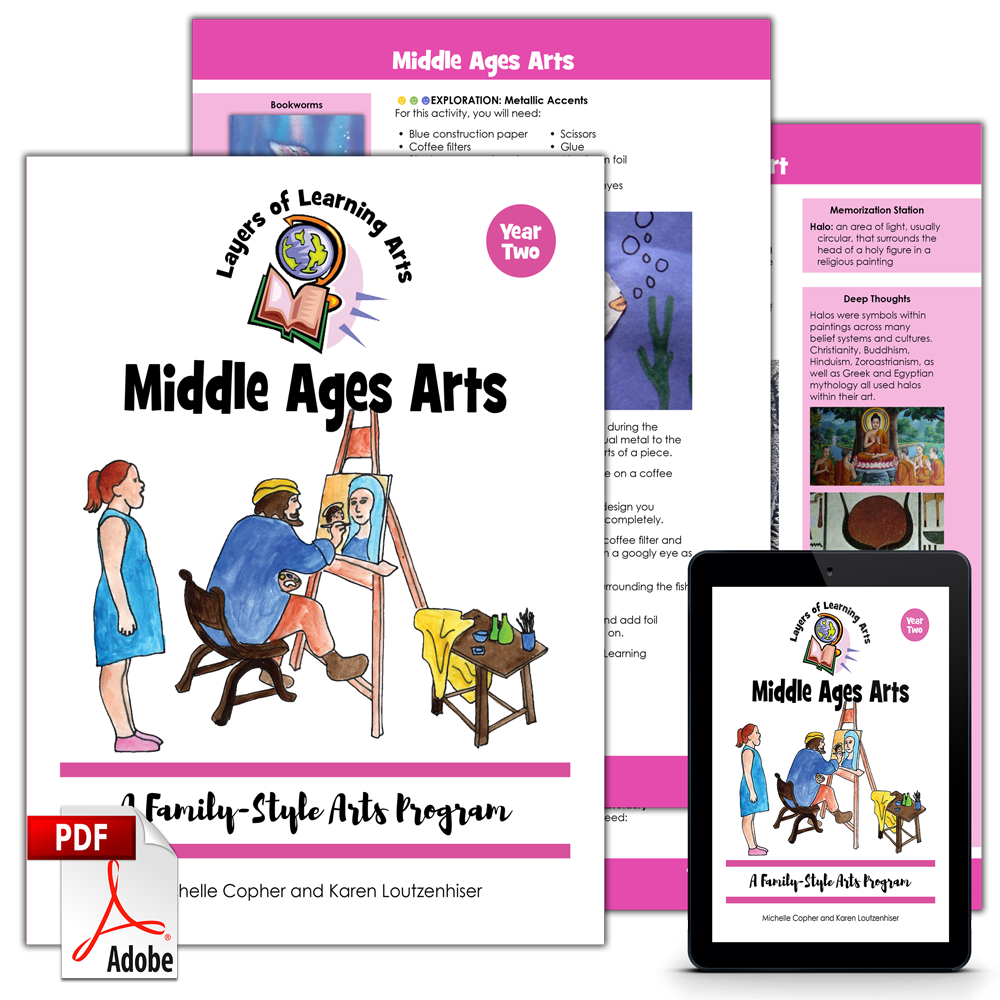
Art cards are found within many of the Layers of Learning units. We use them so kids can become familiar with the great art of the world while holding it in their hands, playing games with it, and learning to spot the details. Layers of Learning has hands-on art explorations in every unit of this family-friendly curriculum. Learn more about Layers of Learning.
Learning about great artists and their works is a great beginning to art education. If we could go to art galleries every week we would, but sadly, that’s not a feasible part of our homeschool (although we do go whenever we get the chance!). Instead, we look at famous artwork in art books and online. We also use art cards to learn paintings,
Step 1: Library Research
Before you begin playing with the art cards, read a book or two about art. We like to keep some art books on hand that cover a lot of art periods so we always have something, no matter which Layers of Learning unit we’re on. Here are some suggestions, but if you can’t find these, look for books at your library about the art movement you’re studying. The colored smilies above each book tell you what age level they’re recommended for.
As Amazon affiliates, the recommended books and products below kick back a tiny percentage of your purchase to us. It doesn’t affect your cost and it helps us run our website. We thank you!

The Arts: A Visual Encyclopedia
by DK
Step 2: Art Cards Exploration
For this exploration, you can choose whatever printable art cards you’d like. You can print two of one set for matching games, several sets that you try to sort, or just a single set to study and learn about.
Art appreciation is more than just looking at art. To appreciate art, you need to understand what you are looking at, but the first step is to become familiar with art and artists. Here are some activities you can do with art cards with your kids of any age.
- Have the kids study one painting for a few minutes, encourage them to try to remember everything they see. Then take the painting away and quiz them on details. This helps them to really look at what they see instead of just getting an overall impression.
- Choose several art cards and write the names of the artists on separate pieces of paper. Match the artist with the painting.
- Get prints of a particular school of painting, like cubism or impressionism. Have the kids find and discuss what similarities there are between the paintings. “Can you see anything these all have in common?”
- Get two identical sets of postcards and have kids match identical paintings to each other, Concentration-style.
- Use prints from two or more different schools of painting and have the kids sort them into their proper categories. All the post-impressionists together, all the Renaissance paintings together, and so on.
- Sort paintings according to artists. All paintings by Degas in one pile, all paintings by Rembrandt in another and so on. Start with artists that have a great deal of contrast between them, then over time move to artists with similarities.
- Sort paintings into color families, cool vs. warm. Discuss the mood of the paintings.
- Sort them from light to dark.
- Sort paintings based on the subject matter – mythology, nature, religious, portraits, and so on.
- Talk about
line in painting and how artists use lines, either curving or straight, short or long, to direct your eye to a certain place, to show movement, to give formality or informality to a painting. - Look for shapes in paintings, people with their bodies making triangles, buildings made of squares, and so on.
- Talk about composition in paintings. Why are the people standing where they are? What role does the background play? The foreground? How do the trees or buildings on the edges of the painting play into the whole? Are the people or objects centered in the painting or do they bleed off the edges?
- Talk about messages or information the artist is trying to share with the painting. Why are certain objects placed in a portrait? Why was a particular religious or mythical scenes done? How are the peoples’ bodies positioned? Are the people looking at the viewer or at something else? Finally, do you agree with the artist’s message?
- Place a grouping of art cards out and let each person choose their favorite and tell what they like about it.
This is a great beginning to art appreciation. You can get new art postcards little by little as you go through your history or art history studies, matching artists with their time period. Once kids recognize some famous paintings, take an opportunity to go to a museum and see the paintings and artwork there for some real-life experiences. When you’ve spent some time in museums you will see that no reproduction on the internet or in a book can match it. There is also a quiet, reverent tone in most museums that is neat to observe as art lovers look at the paintings and other exhibits. Finally, you should also have art books lying around the house or classroom, available for looking through. Once kids start to recognize famous paintings they will love spotting them.
Step 3: Show What You Know
Choose one of the paintings you learned about from the art cards. Glue it down on to a notebooking sheet and write about it. You might need to do a little research from your art books or the internet. Write about who painted it, when, and where. Write about the style of art it fits into. Share what you think the theme is. You can also share what you like most about that piece.
Additional Layers
Additional Layers are extra activities you can do or tangents you can take off on. You will find them in the sidebars of each Layers of Learning unit. They are optional, so just choose what interests you.
Fabulous Fact

Alfréd Hajós, one of only two Olympians to have won medals in both sport and art competitions.
Did you know that art competitions used to be part of the Olympics? Medals were awarded for all kinds of art – painting, sculpture, music, literature, and architecture. It only lasted from 1912 to 1948.
Deep Thoughts
Many artists create multiple versions of the same painting. Vincent van Gogh painted 21 Starry Nights. Claude Monet created about 250 paintings of water lillies! Discuss why you think many artists paint the same things over and over again.
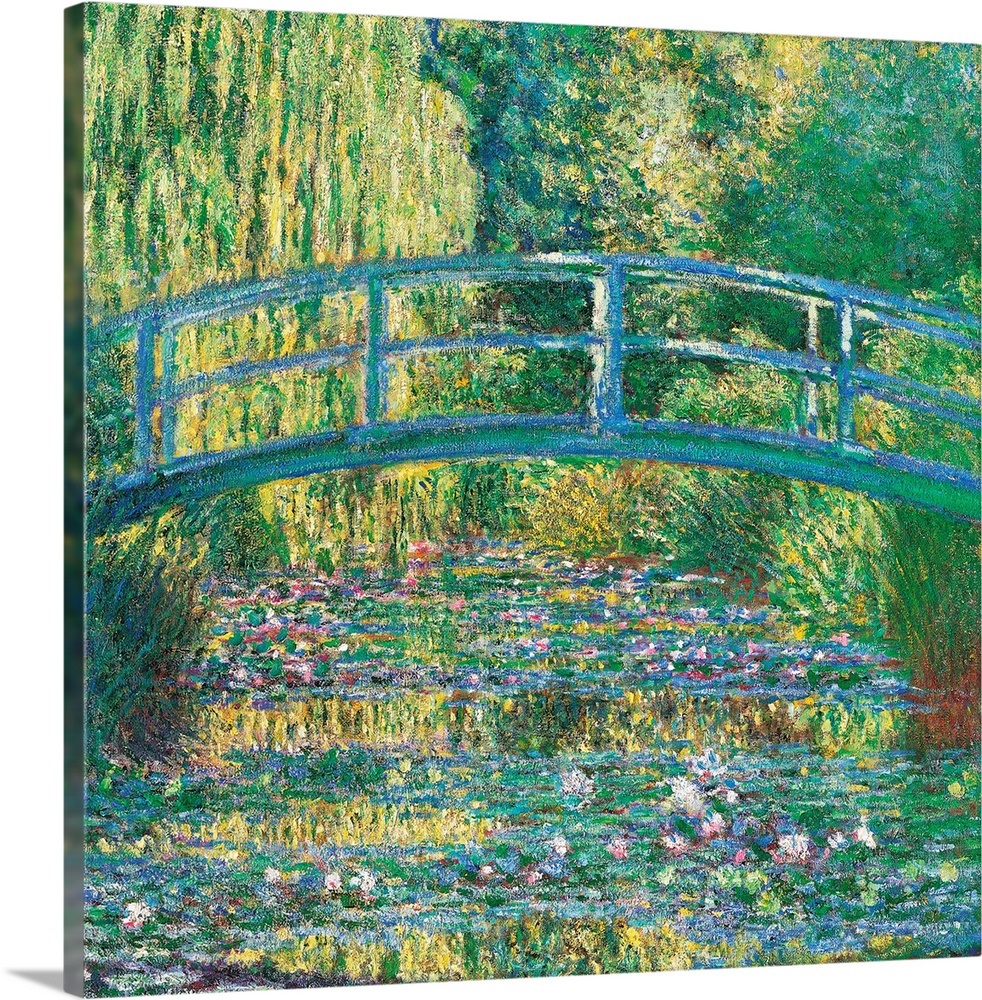
Famous Folks
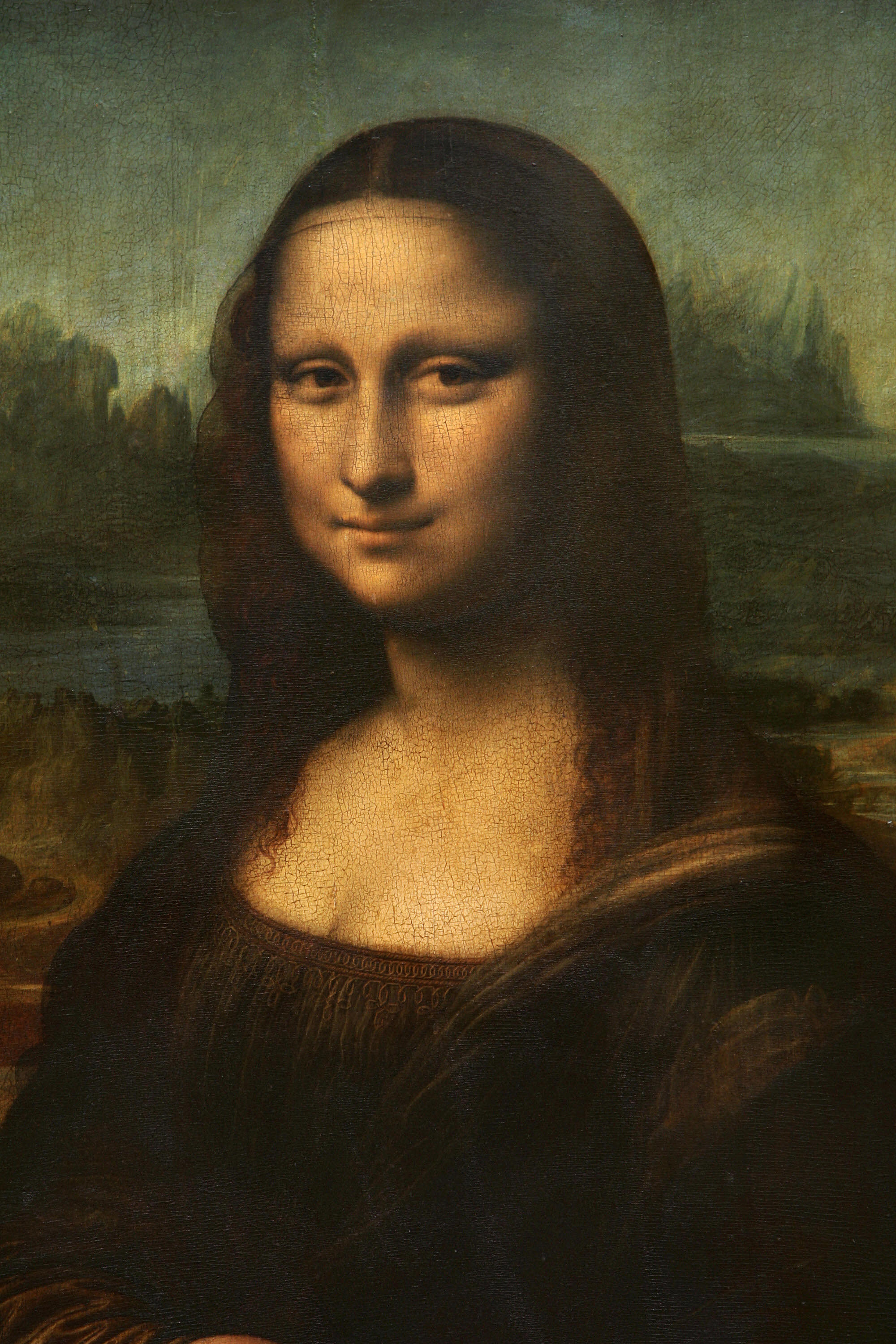
Leonardo da Vinci is considered to be the most famous painter of all time. His Mona Lisa became even more famous after it was stolen.
Get a Free Unit
Choose between the first unit in each Layers of Learning subject to try for free when you sign up for the newsletter.
We never spam and you can cancel your subscription at any time.


